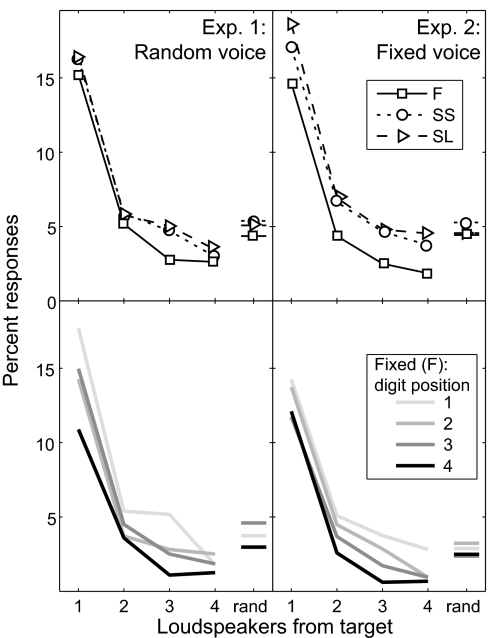Fig. 4.
Spatially directed attention filters out sources from the wrong direction, and this filtering becomes more refined over time when target location is fixed across digits. (Upper) Percentage of responses that corresponded to a digit presented from a nontarget loudspeaker are shown as a function of the distance between the target loudspeaker and the loudspeaker presenting the reported digit. Responses that did not correspond to any of the presented digits are shown at the far right (rand). Responses are pooled across all subjects and all delays for F (squares and solid lines), SS (circles and dotted lines), and SL (triangles and dashed lines). (Lower) Incorrect responses in the F condition as a function of distance between the target loudspeaker and the loudspeaker presenting the reported digit for each temporal position within the sequence (light to dark gray showing results for target digits 1–4). Responses are pooled across all subjects and all delays.

